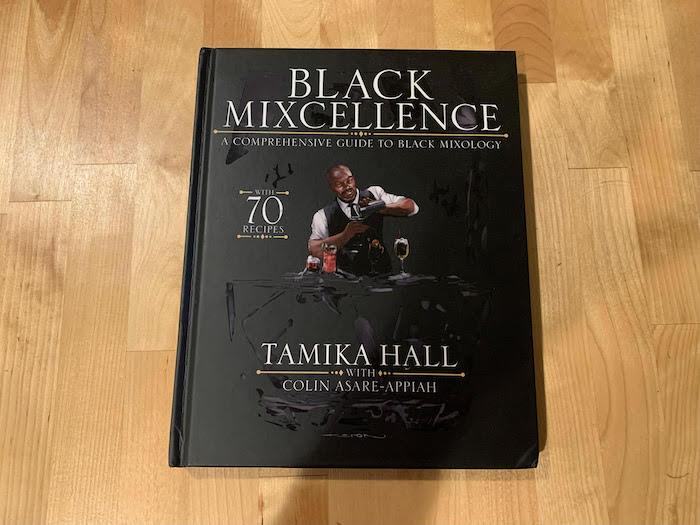Editor’s Note: This book was provided to us as a review sample by its publisher. This in no way, per our editorial policies, influenced the final outcome of this review. It should also be noted that by clicking the buy link towards the bottom of this review our site receives a small referral payment which helps to support, but not influence, our editorial and other costs.
Black Mixcellence: A Comprehensive Guide to Black Mixology is a beautiful book that blends contemporary recipes and Black history. Written by Tamika Hall with Colin Asare-Appiah, this book tells the stories of some of the African American men and women who shaped American liquor, cocktails, and mixology to what it is today. Tamika Hall noticed many of these stories were not being represented and sought to change that:
“Without digging deep into history, you would never know the story of Uncle Nearest, the Black man that taught Jack Daniels how to distill whiskey, or the Black bartender John Dabney, who made the mint julep a common household drink. Whether it was entrepreneurship, education, or a “famous first,” Black Mixcellence aims to change the narrative, and give credit where it’s due.”
In addition to highlighting history, Black Mixcellence takes a look at Black mixology today through featuring the recipes of over 20 mixologists making their mark in the field today. Altogether, this book features 70 cocktail recipes organized by base liquor. The book was published by by Kingston Imperial, with a suggested retail price of $29.99.

This is a fantastic book and a great addition to the home mixologist’s library. The often-left-out history of how African Americans have shaped today’s American liquor industry and cocktail culture is highlighted thoughtfully. The book both celebrates the ingenuity and creativity of these individuals as well as acknowledges the pain and trauma they experienced at the hands of the liquor industry. This section is much shorter than the cocktail recipe section, and I would have loved to read more. However, it lays an important context for the recipes created by some of todays notable Black and Brown mixologists.
The recipes are photographed beautifully and the cocktails include spins on classics as well as drinks I’d never heard of but now want to make. The recipes were easy to understand and utilized, for the most part, ingredients and equipment that would be readily available at a liquor store. Even as a novice cocktail maker I felt I would be able to make these recipes myself.
The only thing I was missing was that I would have loved to read a sentence or two at the beginning of the recipe to give context about the background of or the mixologist’s inspiration for a given drink. I recognized names like “high ball,” “margarita,” and “old fashioned;” however, I didn’t know if some other drinks were completely original or if it was a long-standing cocktail I just hadn’t heard of before.
Regardless, I loved the clarity of recipes and organization by liquor. This is a great addition your library or gift for a cocktail lover.







